Meet artist María Gordon and discover more about the world behind Pollock’s latest release: the Rusalka Paper Theatre Posted on
Inspired by the Cantabrian grey sea and beech forests of her childhood, artist María Gordon creates silent stories about creatures and landscapes from other worlds, blending dreams, memories, nature and spirit folklore. María’s work spans from illustrations to dioramas, peep-shows to praxinoscopes, but this is her first time experimenting with a toy theatre.
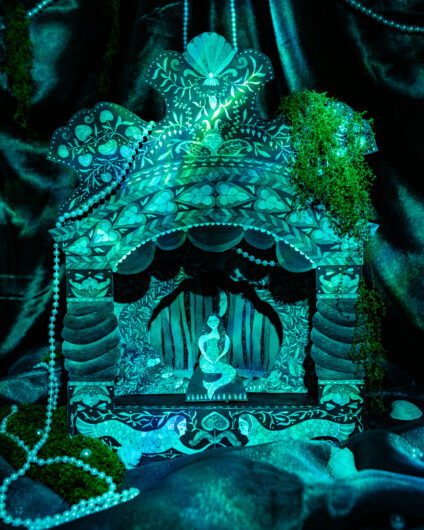
Rusalka Paper Theatre
- Hi María, thank you for chatting with us today! Let’s start from the beginning – we became friends about a year ago working on an exhibition together, but had you heard about Benjamin Pollock’s Toyshop before? Were you familiar with toy theatres at all? What made you connect with the shop, exactly?
Yes, I had actually seen Clive’s toy theatre before, and from the very first moment I thought it was such a magical object. I wasn’t deeply familiar with toy theatres as a tradition, but I was captivated by the idea of storytelling in small layers, and by the atmosphere of the shop itself – it feels like stepping into another world in which one can continue to play – like a child. That sense of wonder and imagination was what truly attracted me to the place.
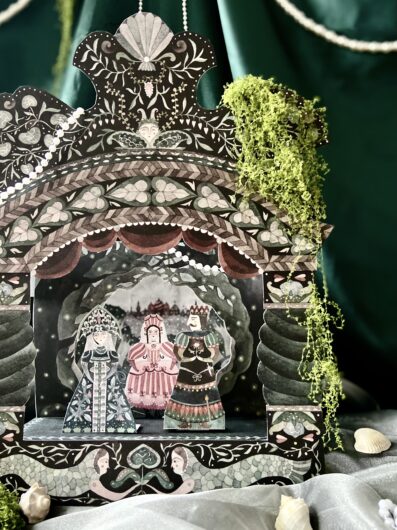
Rusalka Paper Theatre
- Your work seems imbued with the impressions and emotions childhood can often leave us with as adults. You often touch on melancholic themes, especially by experimenting with media belonging to the toy world: praxinoscopes, music boxes, shadow puppets. What role would you say childhood and, more specifically, toys play in your art?
Toys in particular are fascinating because they are both playful and melancholic, they are made for joy, yet over time they become relics of something lost. Perhaps you could say that toys are like vessels of nostalgia: they don’t just contain memories, they also cradle and console them. There is something magical in the way these objects can comfort us while at the same time reminding us of what is gone. With pieces like dioramas, music boxes or praxinoscope strips, I try to explore that duality: toys as bridges between past and present, joy and melancholy, memory and imagination.
I suppose very few people have had a perfect childhood, and perhaps that’s why these objects can speak to many of us. What I would like is for those who encounter my artworks to find in them a kind of warmth that remains. For me, it’s like a sour candy: on the outside, coated with a inevitable sadness, but with a core of hope. That hope is not about saying ‘everything will be fine,’ but about recognizing the quiet beauty of things that persist, often unnoticed, through time.
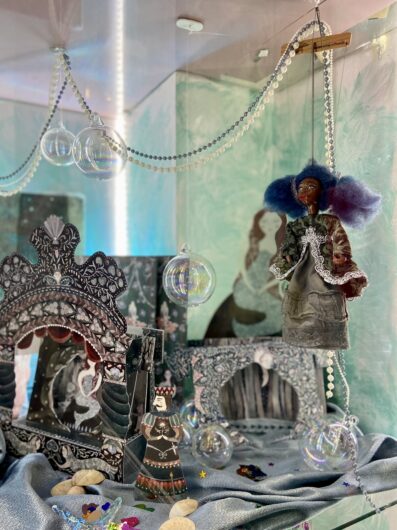
The Rusalka Paper Theatre at Benjamin Pollock’s Toyshop
- Tell us more about Rusalka and how it felt to explore her world. Had you stumbled upon her story before? Did you have any kind of visual reference in mind?
I already knew the figure of Rusalka and had even made an illustration inspired by her before. But working on the toy theatre gave me the chance to go much deeper into her feelings and story, trying to imagine how is the world she lives in.
When it came to visual references, I actually had two different ‘spheres’ in mind: on one side, Rusalka’s more nocturnal, ethereal, operatic dimension; and on the other, her more folkloric, earthly side. I guess those are her two sides and that makes her such a fascinating figure, always suspended between two realms: human and otherworldly, enchanting and melancholic.
In the end, I’d say the atmosphere of the tale itself guided me, helping me find a balance between those contrasts.
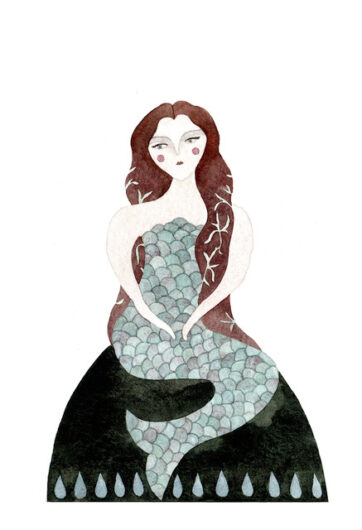
Rusalka
- How did you find the process of adapting your illustrations for a three-dimensional product? Was there an aspect you found particularly challenging? Or surprisingly easy?
The process was truly beautiful, one of the most rewarding artistic experiences I’ve had. I loved the creative freedom I was given, and it was so much fun to imagine the characters and bring them to life in this new format. The most challenging part was probably having to choose between ideas, because I could have gone on forever creating different versions of the sets and scenes. It was hard to stop!
- Did this project allow you to try something new from a creative perspective?
Yes, definitely. I’ve done 3D work before, but this project gave me a fresh perspective on how the space, visuals, and story all interact, pushing me to play with storytelling in a new way for me. It was really fun to experiment with that and see what worked.
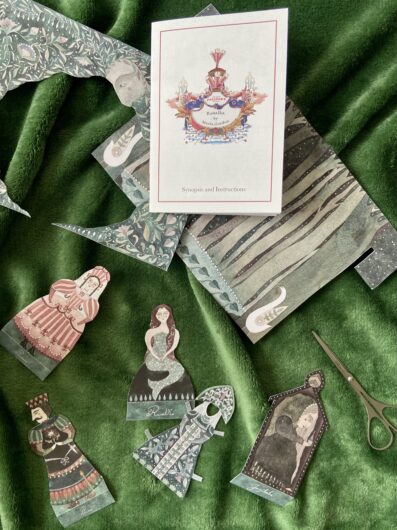
Details from the Rusalka Paper Theatre
- What else have you got coming up and is there something you’d like to experiment with in the upcoming future?
I’ve got a few projects coming up that I’m really excited about, including some collaborations planned for 2026. Right now, I’m focusing on continuing to create music boxes and some small and raggedy dollhouses! I’m also eager to experiment with a small animated shadowplay story that I haven’t had time to work on yet, and I’ve decided to postpone it until the holidays. I’m starting to experiment with new materials, and that always sparks a whirlwind of ideas and possibilities. It’s wonderful how different textures and mediums can lead to fresh ways of telling stories, and I’m excited to see where these experiments take me next.
Chiara Scoglio October 2025
